Guide to Lucca, Italy
Affiliate disclosure: some of the links in this article are affiliate links. If you book using one of them, we’ll earn a small commission. All of our info is free to read and free of ads, so we appreciate it!
Just walking around Lucca gives you a sense of well-being and a little bit of wonder. Lucca is one of Tuscany’s most beautiful provincial cities, and the lively cobbled streets and glittering church facades, along with the fine food and wine of this rich agricultural region, all seem geared toward contentment.
Anyone who’s been making the Tuscan hill town circuit might be especially pleased to discover that Lucca is flat as a pancake, making it easy to get around on foot or, as the Lucchese do, on bicycle.
Lucca has been prosperous since the Romans established a town here on the site of an Etruscan settlement and laid out the gridlike streets that still crisscross the city. The massive walls that entirely enclose Lucca were an innovation of the 16th century, when Lucca was a stop on the Via Francigena pilgrimage route and a center of the silk trade.
Handsome palaces and graceful piazzas are the legacy of these many good years, and the music of local son Giacomo Puccini, the composer of La Boheme and some of the world’s other favorite operas, adds yet another note of grace to this beautiful city.
When you finish this guide, find more Tuscany travel advice in some of our other articles:
Table of Contents
Lucca planning cheatsheet
 Plan your itinerary with expert advice
Plan your itinerary with expert advice
- Book an Italy travel consultation with a local expert
 My favorite hotels in Lucca
My favorite hotels in Lucca
- Palazzo Dipinto - Beautiful booutique hotel right in the city center. $300-450 USD
- Grand Universe Lucca - Chic and recently renovated historic property. $250-350 USD
- Hotel Palazzo Alexander - Old World elegance tucked away on a quiet street. $130-240 USD
- Alla Corte degli Angeli - Charmingly rustic and very pleasant hotel steps from all the sights. $130-220 USD
- B&B Arena di Lucca - simple but pleasant B&B overlooking Piazza Anfiteatro. $100-150 USD
 Guided tours and activities
Guided tours and activities
 How to get around
How to get around
- Car rentals with DiscoverCars
- Train tickets from Trenitalia and Italo
- Bus routes via Autolinee Toscane, Sitabus, and Flixbus


Where is Lucca?
Lucca lies in northwestern Tuscany within a fertile agricultural plain and along the Serchio River. The city is about 95 kilometers due west of Florence and is near the coast, just 30 kilometers inland from the popular seaside resort of Viareggio.
The city of Pisa is just a half hour by car to the south, while the famous Ligurian villages of the Cinque Terre sit about 1 hour north.
How to get here
By train
From Florence: Florence and Lucca are well connected by frequent direct train service, typically with 2 departures every hour starting early in the morning and continuing well into the evening. The trip takes 1.5-2 hours and tickets cost 10 euros.
From Pisa you also have frequent service, with the journey taking about 30 minutes,
Lucca is also well connected by train to the nearby cities and towns of Viareggio, Prato, and Pistoia.
By car
If driving, Lucca is about 1 hour away from Florence and is reached via the E76 highway.
The historic center of the city is closed to car traffic, but there are ample, well-marked parking lots all around the city walls.
You have a few car rental agencies in Lucca's "new” town, but for the best selection you should plan to rent in Pisa or Florence.
To check prices and book, I recommend using DiscoverCars. It’s a car rental website that includes offerings from most major international rental companies as well as lots of smaller local agencies, which often have much better pricing. You can often find great deals.
Why visit
Lucca has been a wealthy city for almost its entire history, and continues to be one today, and it’s an elegant town with cobbled streets, walkable city walls, beautiful buildings and palazzi (noble residences), pretty churches, and impressive villas in the surrounding countryside. There are no major “must visits” in town, but that’s part of what is so appealing; it’s just a nice place to spend some time in.
While it is a popular place, it receives far fewer visitors than more known Tuscan cities, meaning that it retains a bit of a more local charm.
It’s also close to places like Pisa, Livorno, and the Cinque Terre, as well as some decent beaches, making plenty of good day trips possible.
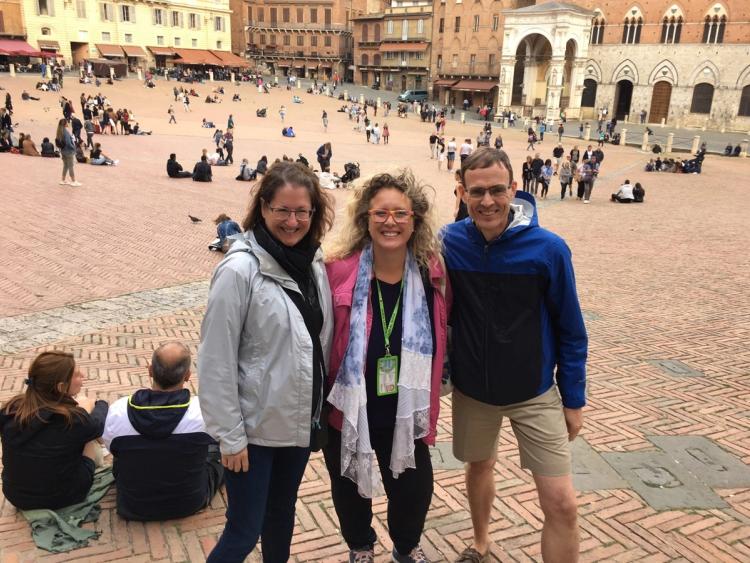

How long to spend
Photo: Arne Müseler / www.arne-mueseler.com, CC BY-SA 3.0 DE, via Wikimedia Commons
Lucca is very popular with day trippers (especially from Flroence) who rush in and out of the city in just a few hours, but if you were to do an informal poll with people as they depart, you’d probably discover that most of them wish they’d stayed for longer.
I generally recommend a full day in Lucca to really enjoy what the city offers. By spending an entire day here you can see the beautiful churches, walk or cycle along the city walls, stroll down the main shopping street, Via Fillungo, and do some people watching in the many lovely squares and cafés. Lucca doesn’t have many major sights, but it’s an elegant and pleasant place, so you want to enjoy it leisurely.
Staying overnight is better though, as that means you’ll have more time to poke around a bit and admire some of the many small details that make the town so charming, like the Art Nouveau signs etched in glass above some of the shop fronts, and a magnificent Renaissance-era display window in front of Carli, a gold and silver shop on Via Filungo.
In all but the coldest weather, the Lucchese like to linger over a cocktail or glass of wine in outdoor cafes, and if you spend the night, you can join them before heading for dinner in one of the many good restaurants in town.
Lucca is also a convenient place to settle in for several days and use as your base for to explore the surrounding area. Again, this is a sizable city of 90,000 people, so you can easily spend a few very pleasant days here, especially if a portion of each of them is spent visiting other cities, towns, and attractions nearby.
As I mentioned before, Lucca is well connected by train with other points of interest (Florence, Pisa, Via Reggio on the coast, etc.), so it’s one of the few places in Tuscany outside of Florence that makes for a reasonable base if you’re relying on public transportation.
Where to stay
Lucca is a popular destination and as such it has a good selection of accommodations. The city is busy year-round, though things slow down a bit between November and April, and this is when you’re most likely to find the lowest prices for hotels.
Below are a few good options for where to stay, mostly within the historic city walls. Note that the rates mentioned are for a double room and include breakfast.
Palazzo Dipinto - This stylish and design-forward boutique hotel is right in the city center. It’s not cheap, but it’s quite nice. From 250 - 400 euros.
Grand Universe Lucca - A historic hotel that’s hosted visitors from John Ruskin to Chet Baker and has been redone with lots of contemporary-chic style. From 200 euros to 300 euros.
Hotel Palazzo Alexander - Plush rooms in this 12th-century palace honor the composer Puccini and even include a garret (a sort of attic) for a luxurious take on La Boheme. From 100 euros to 200 euros.
San Luca Palace Hotel - An old palace just inside the walls provides lots of old-world comfort. From 120 euros to 180 euros.
Alla Corte degli Angeli - Flower motifs, rich upholstery, and antiques make this fashionable old palazzo a top choice for an atmospheric stay in equally atmospheric Lucca. From 120 euros to 180 euros.
B&B Arena di Lucca - A comfortable and character-filled old apartments with a prime position on the Piazza dell’Anfiteatro. From 65 euros to 120 euros.
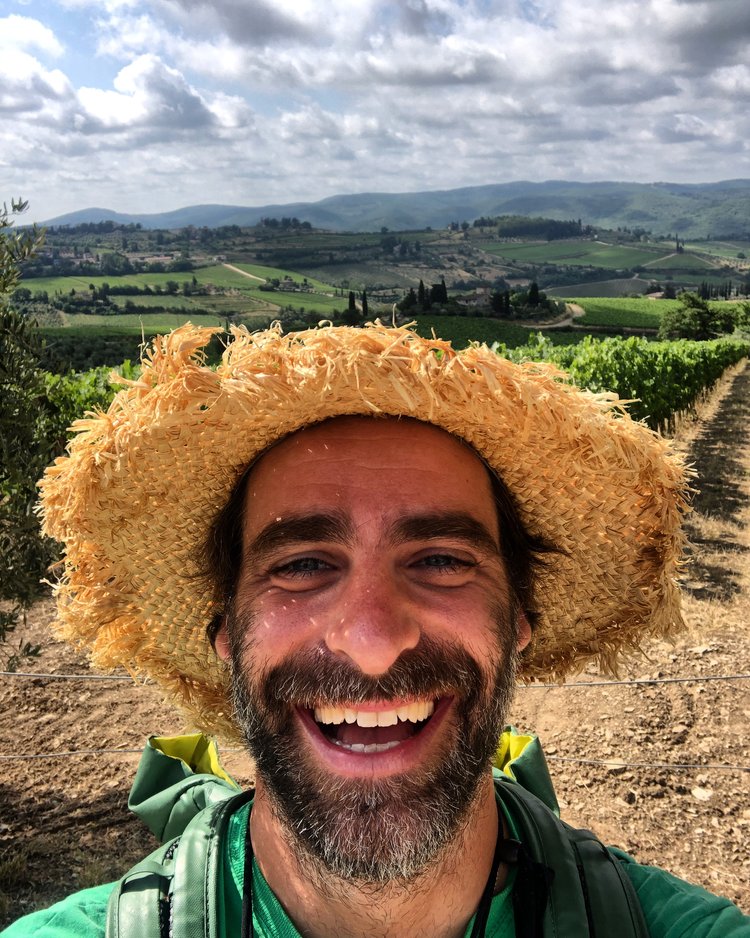

What to see and do
1. Walk or bike along the city walls
The 4km (2 ½ miles) of fortifications that completely enclose Lucca were a 16th innovation to deter invasions, and they worked—the city was never besieged. Today the walls are topped with plane and chestnut trees that shade the Passeggiata della Mura, a walkway that can be circumnavigated on foot or bike and affords birds’-eye views over the town and surrounding countryside.
One of the highlights of a circuit is a look down into the baroque gardens of the Palazzo Pfanner, a 17th-century nobleman’s home.
One of the tree-lined walkways atop the city walls. Photo: Jscarreiro at English Wikipedia, Public domain, via Wikimedia Commons
2. Be dazzled by the Church of Frediano
At this church honoring a 6th century Irish bishop of Lucca, dazzling mosaics on the façade portray the Ascension of Christ as the apostles look on.
The best time to take in the spectacle is the morning, when the east-facing façade catches the early sun.
Church of Frediano. Photo: Myrabella / Wikimedia Commons / CC BY-SA 3.0
3. Find traces of ancient Rome in Piazza dell’Anfiteatro
Lucca’s Roman amphitheater was plundered for marble and stone centuries ago, but in its places is sunny, oval-shaped piazza ringed with medieval houses.
Some of the arched little alleyways leading into the piazza are the original entrances to the arena.
An aerial view of Piazza dell’Anfiteatro. Photo: Kasa Fue, CC BY-SA 4.0, via Wikimedia Commons
4. Climb the Torre Guinigi
This tall brick tower, topped with a grove of oaks, was built in the 14th century as a status symbol for a powerful family who occupied the palace below. Now, with a climb up 230 stone steps, the heights afford knockout views over the town.
Torre Guinigi. Photo: LivornoDP, CC BY-SA 3.0, via Wikimedia Commons
5. See the treasures of the Cattedrale di San Martino
The city’s cathedral was begun in the 10th century, reached its present form four centuries later, and was never completed (it’s still missing a loggia and some other components). Beyond the remarkable carvings around the entrance depicting saints and other figures are two of the city’s greatest treasures.
The Volto Santo is a miraculous Crucifix said to have been carved, with some divine intervention, by Nicodemus, who removed Christ’s body from the cross. The Tomb of Illaria dei Corretto is a beautiful marble sculpture of a young woman depicted with her dog, a sign of fidelity.
The crucifix, which was miraculously transported to Lucca from the Holy Land, is carried through the city in processions in early May and September.
6. Gaze at San Michele in Foro church
The elaborate façade of this church built on the site of the Roman forum rises in four columned tiers that are inlaid with leaping animals and flowers and topped with Michael the Archangel, accompanied by trumpeters.
Take a seat in a café opposite the church to enjoy this fanciful creation in gleaming marble that may well remind you of a wedding cake.
San Michele in Foro church. Photo: Spike, CC BY-SA 4.0, via Wikimedia Commons
7. Pay homage to Puccini at his museum
Giacomo Puccini, the creator of such operatic classics as La Boheme and Madame Butterfly, was born in Lucca and his childhood home has been turned into a house-museum. It's filled with written scores and other mementoes that include the composer’s piano.
Puccini buffs may also want to make the trip to Torre del Lago, a peaceful seaside village on the coast about 50km (30 miles) east where the composer lived for 30 years.
His lakeside villa is now a museum commemorating his life and work, and the town stages an annual Puccini festival.
The exterior of the Puccini Museum in Lucca. Photo: TeKappa, CC BY-SA 4.0, via Wikimedia Commons
8. Make Some Day Trips
Before getting into my favorite day trips from Lucca, I want to make a quick note about the Cinque Terre, because people always ask. So, the Cinque Terre is a little too far, and the villages there offer so much to do that it’s not really practical for a day trip.
However, Lucca is a handy overnight stop for travelers coming from and going to that popular area. La Spezia, the gateway to the Cinque Terre, is an hour and a half to two hours from Lucca by train.
Now on to the day trip options:
The Gafagnana
This verdant valley follows the banks of the Serchio River beneath hillsides carpeted in chestnut groves. The scenic region is about 45 minutes north of Lucca by car, making for an easy escape into beautiful rural scenery.
Hiking trails crisscross the enchanting forests, where even the manmade creations are picturesque—the narrow humpbacked, 11th-century Ponte del Divalo (Devil’s Bridge) crosses the Serchio as it flow pass the settlement of Borgo a Mozzano.
Montecatini Terme
One of Italy’s most famous spas was fashionable even in Roman times, and the waters these days are channeled into grand, early 20th-century bathing establishments along Viale Verdi.
Treatments are said to address ailments of the liver, kidneys, and intestines, but even visitors in the pink of health will enjoy a dip in the thermal outdoor pools in and around town.
Pisa
Pisa is so close, just half an hour by train, that there’s no excuse not to drop in for a look at the famous tower and other monuments on Piazza del Duomo. Get off at San Rossore station, a few blocks west of the piazza, but do yourself a favor and catch the train back to Lucca across town at the Stazione Centrale.
This gives you a chance to walk through this gracious medieval and Renaissance city and enjoy such spectacles as the Arno River flowing past the jewel-boxlike Chiesa di Santa Maria della Spina, tucked onto the banks.
Pistoia
This storied town halfway between Lucca and Florence is alleged to be the birthplace of the pistol (pistolese) and is full of marble monuments that are so elaborately striped they could put a zebra to shame.
Highlights include the octagonal Battisero and the glorious cathedral of San Zeno, a pleasing pastiche of arches and terracotta decorations.
The city’s heavy-duty roster of masterpieces also includes the colorful frescoes that cover every inch of the interior of the Capella del Tau; a pulpit by Giovanni Pisano in the 12th-century church of Sant’Andrea; and a glazed terracotta frieze by Giovanni della Robbia representing the Seven Acts of Mercy on the Ospedale del Ceppo.
Prato
One compelling reason to make the hour-long trip east to Prato is see another one of Italy’s magnificent fresco cycles, Fra Filippo Lipi’s depictions of St. Stephen and John the Baptist in the Duomo.
Another is to taste cantucci at the source. These twice-baked almond biscuits, a ubiquitous Tuscan dessert often dipped in vin santo, originated in Prato. None are better than those at Antonio Mattei, a historic bakery that’s been making cantucci since 1858.
Viareggio
In one of Tuscany’s favorite seaside getaways, the Passegiatta Margherita is lined with shops, restaurants, and bathing establishments and fronts a beach that’s so packed with sun beds and umbrellas that you can barely see the sand.
There’s a festive feeling in the air even in winter when the town stages some of Italy’s most elaborate carnival celebrations. Viareggio is a quick getaway from Lucca, less than half an hour by train or bus.
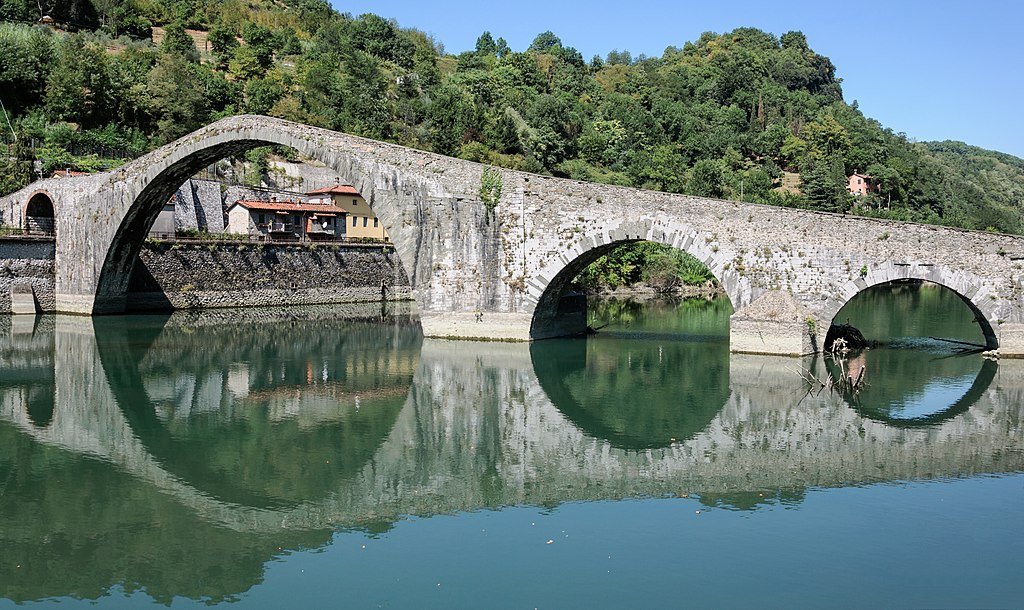

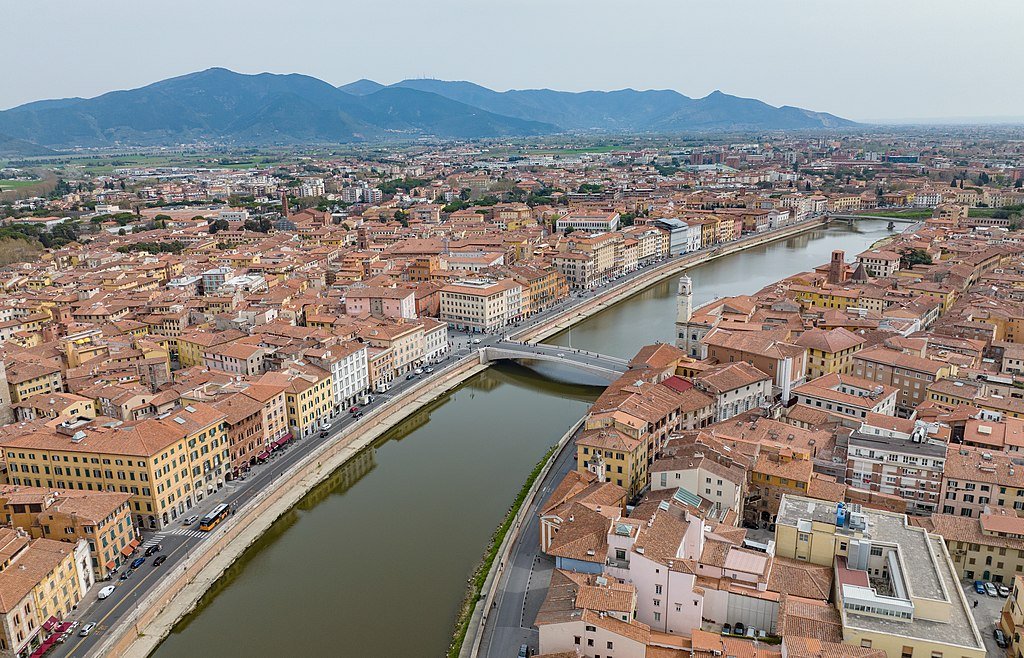

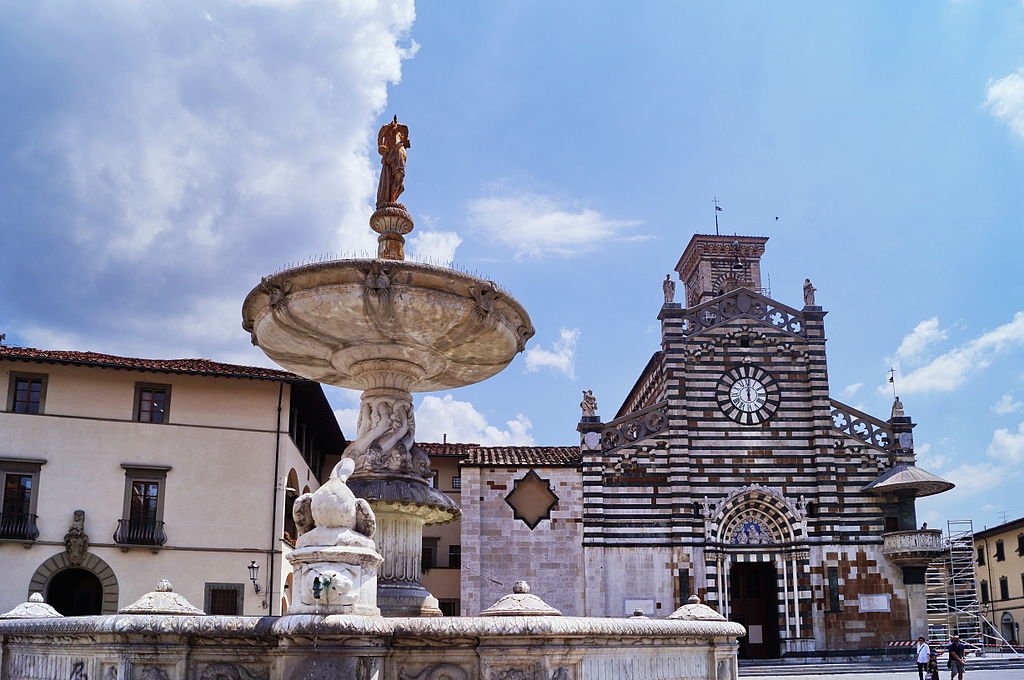
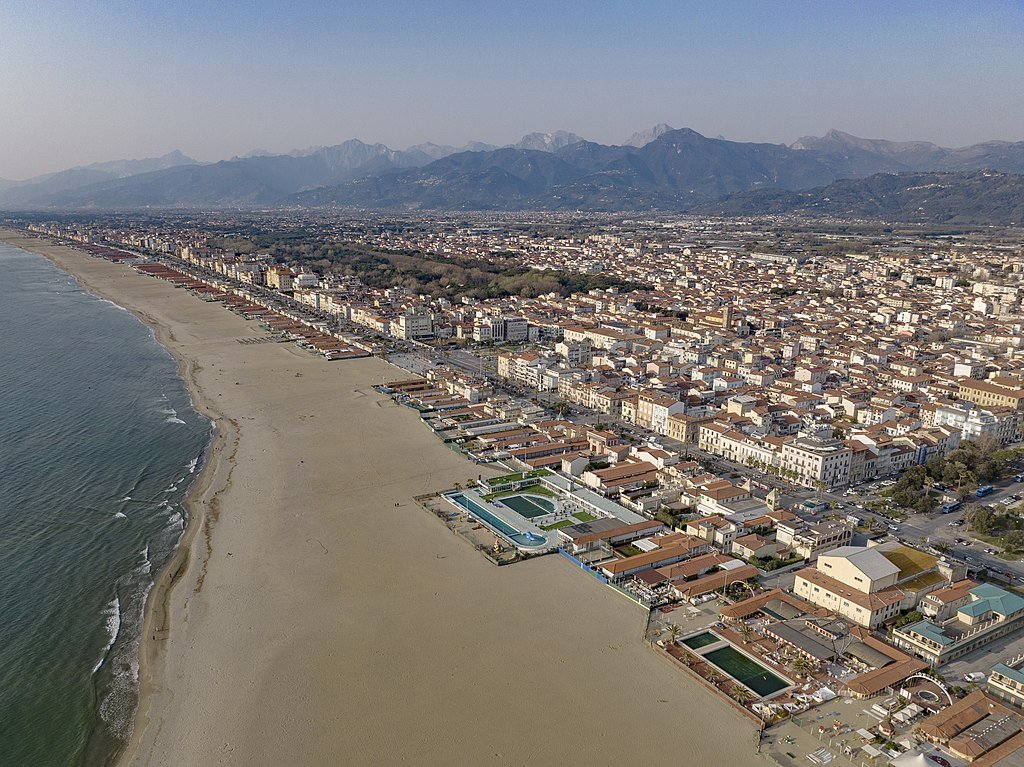
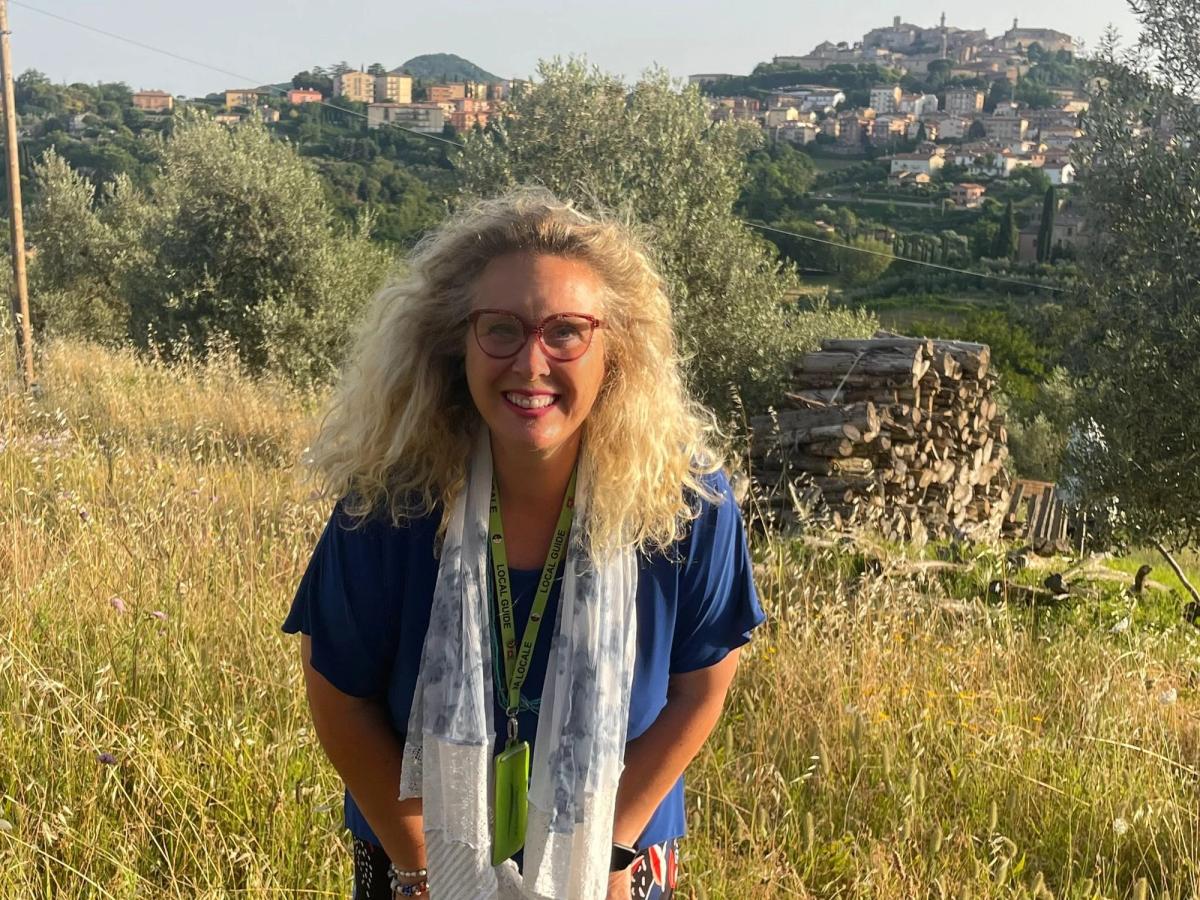

When to visit
Lucca is busiest during the tourist season that consumes Tuscany from late May well into September, but with close to 90,000 inhabitants, the city remains lively throughout the year. Being a legitimate little city, it is also never entirely overrun with tourists unlike some smaller popular towns in Tuscany.
The early to mid-Fall, starting from the middle of September and running through a good chunk of November, can be a very nice time to visit as the crowds are significantly reduced, the prices for accommodation drop, and the city and its residents are fully in the swing of daily life.
Spring is much the same as the fall, but the weather can be a bit wetter. Both seasons have pleasantly warm daytime temperatures, with the evenings becoming a bit chillier.
If you come in late October, you might be surprised to find yourself surrounded by the costumed attendees of the Lucca Comic and Games convention.
And if happen to visit any time from April through October you can treat yourself to a concert of the Puccini e la sua Lucca program at the church of San Giovanni.
Restaurants and dining
Lucca adds to its charms with some tasty local specialties, including buccellato, a ring-shaped sweet bread flavored with raisins and fennel seeds. It appears on many dessert menus, but the best in town is at Taddeucci, an atmospheric 19th-century pastry shop.
Diners are spoiled for choice in Lucca, with lots of game and meat-heavy sauces sourced from the mountains and surrounding countryside, as well as fish and seafood from the nearby coast.
Lucca’s favorite fast food is focaccia, dispensed with various toppings from counters around the city; many consider Amedo Giusti to be the best. The city also produces its own extra-rich olive oil, along with red wines based on Sangiovese grapes, and whites from Trebbiano varieties.
Here are some excellent local restaurants to try:
Buca di Sant’Antonio - Farro alla garfagnana (barley, soup), rich rabbit stews, and other local favorites are served in historic surroundings beneath a ceiling hung with copper pots. Dinner for two about 80 euros.
Da Leo - Tuck into big platters of roasted piglet and rabbit served on plastic tablecloths in a decades-old Lucca favorite. Dinner for two about 50 euros.
Osteria San Giorgio - The photograph-decorated rooms are informal and the menu is decidedly traditional, full of such Lucca favorites as farro alla lucchesse (beans and barley) and baccalà, salt cod served here with chick peas. Dinner for two about 50 euros.
Ristorante All’Olivo - Seafood brought in from nearby Viareggio takes center stages in these elegant rooms and covered garden. Dinner for two about 100 euros.
Trattoria Da Giulio - A local institution has been feeding Luchese with sausage and beans, ragu topped pastas and other homey favorites for 80 years. Dinner for two about 40 euros.
How to spend a day in Lucca
I’d recommend spending a full day enjoying Lucca, but if you’re pressed for time and trying to do a lot in a single day, you can actually visit both Lucca and Pisa in a single day. That’s what I’ve outlined for you below.
Morning
Sooner or later you’ll want to get up on the walls that encircle this elegant town, but first, take a morning walk to appreciate the beauty of the facades of the churches of San Frediano and San Michele in Foro glittering in the morning sun.
Then walk up the main street, Via Fulingo, to Piazza dell’Anfiteatro, an oval-shaped space laid out on the site of the Roman amphitheater.
After a stop to climb the Torre Guinigi, a 14th-century tower with great views and a little grove of oaks on top, head to the cathedral.
After visiting the church, stop for lunch.
Afternoon
Work off a long lunch with a walk or bike ride around the city’s complete circuit of walls, planted with trees and affording wonderful views over the town and surrounding countryside.
End your circuit near the train station, where you can board a train for Pisa. The ride is less than half an hour, so you’ll arrive in time to take a stroll through this charming and often unappreciated city on the River Arno to the main attractions, the Leaning Tower and other landmarks of the Piazza del Duomo.
After another stroll through Pisa, maybe with a stop for an aperitivo near the atmospheric, medieval Piazza delle Vettovaglie, brings you back to the train station and the return to Lucca.
You’ll be here in time to enjoy a glass of wine or a cocktail in an outdoor café in all but the harshest weather then dinner.
Head back to Lucca in the late evening.
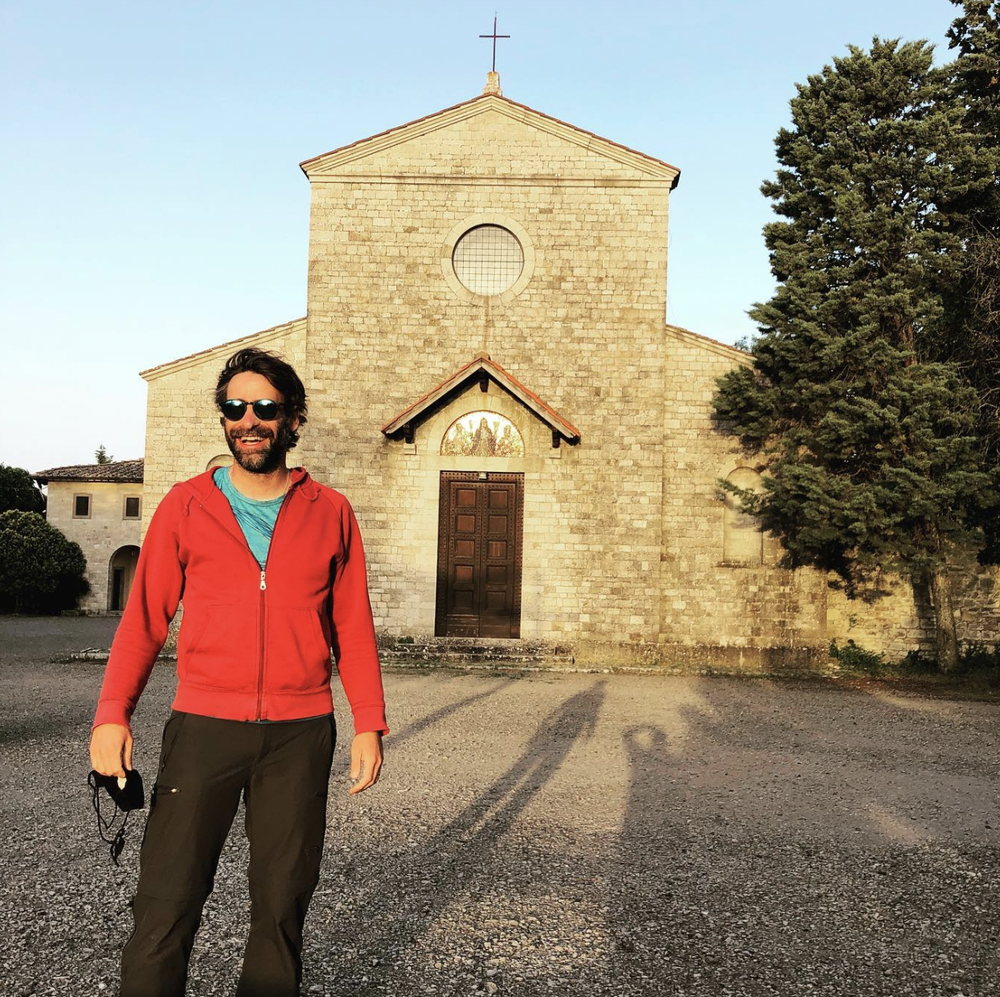

More Tuscany travel info
For more advice on planning your trip to Tuscany, have a look at some of our other guides and itineraries!
Florence
Tuscany
















